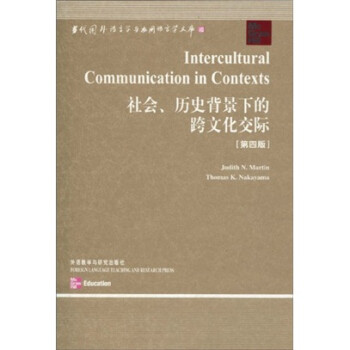精彩书摘:
About a quarter of Americans live unconnected to the Internet, meaning that they have never been online and dont know many others who use the Internet (Lenhart et al., 2003).
Of those who do not use the Internet, 41% live in households earning less than $30,000; only 6% come from households earning more than $75,000 (Lenhart et al., 2003).
Even when education and income are the same, blacks and Latinos are less likely to go online than whites (Hacker & Steiner, 2002; Jackson, Barbatsis, Biocca, von Eye, Zhao, & Fitzgerald, 2004).
Even larger inequities exist outside the United States: There are more telephones in New York City than in all of rural Asia, more Internet accounts in London than all of Africa. As much as 80% of the worlds population has never made a phone call.
Finland alone has more Internet users than the whole of Latin America.
The estimated number of personal computers in Australia is 10 million, in New Zealand is 1.5 million, in the United States is 178 million, and in all of Africa 7.55 million.
The United States, Canada, France, Germany, Italy, Japan, Russia, and the United Kingdom account for less than 20% of the worlds population but "own" 80% of Internet hosts and most traffic.
作者简介:
Judith Martin grew up in Mennonite communities, primarily in Delaware and Pennsylvania. She has studied at the Universite de Grenoble in France and has taught in Algeria. She received her doctorate at the Pennsylvania State University. By background and training, she is a social scientist who has focused on intercultural communication on an interpersonal level and has studied how peoples communication is affected as they move or sojourn between international locations. She has taught at the State University of New York at Oswego, the University of Minnesota, the University of New Mexico, and Arizona State University. She enjoys gardening, going to Mexico, and hosting annual Academy Awards parties, and she does not miss the harsh Midwestern winters.
Tom Nakayama grew up mainly in Georgia, at a time when the Asian American presence was much less than it is now. He has studied at the Universite de Paris and various universities in the United States. He received his doctorate from the University of Iowa. By background and training, he is a critical rhetorician who views intercultural communication in a social context. He has taught at the California State University at San Bernardino and Arizona State University. He is a voracious reader and owns more books than any other faculty member in his department. He watches TV-especially baseball games-and lifts weights. Living in the West now, he misses springtime in the South.
内容简介:
《社会、历史背景下的跨文化交际(第4版)》作者客观地审视了目前跨文化交际研究的众多方法,在综合和批判的基础上,提出了一个新的研究视角一辩证法。作者首先强调应在社会、政治、历史等大环境中研究和探索跨文化交际;其次,作者非常重视权势与交际的关系,交际中的交往双方地位“永远不平等”的观点,是《社会、历史背景下的跨文化交际(第4版)》两位作者的独特见解;再之,《社会、历史背景下的跨文化交际(第4版)》把研究重点放在美国国内不同亚文化或不同共存文化之间的交际方面,对读者了解和认识美国不同群体文化的交际大有助益。
目录:
Preface
To the Student
PART I FOUNDATIONS OF INTERCULTURAL COMMUNICATION
Chapter 1 Why Study Intercultural Communication?
The Technological Imperative
Technology and Human Communication
Access to Communication Technology
The Demographic Imperative
Changing U.S. Demographics
Changing Immigration Patterns
The Economic Imperative
The Peace Imperative
The Self-Awareness Imperative
The Ethical Imperative
Relativity Versus Universality
Being Ethical Students of Culture
Discussion Questions
Activities
References
Chapter 2 The History of the Study of Intercultural Communication
The Early Development of the Discipline
Nonverbal Communication
Application of Theory
An Emphasis on International Settings
An Interdisciplinary Focus
Perception and Worldview of the Researcher Three Approaches to Studying Intercultural Communication
The Social Science Approach
The Interpretive Approach
The Critical Approach
A Dialectical Approach to Understanding Culture and Communication
Combining the Three Traditional Paradigms:The Dialectical Approach
Six Dialectics of Intercultural Communication
Keeping a Dialectical Perspective
Discussion Questions
Activities
References
Chapter 3 Culture, Communication, Context, and Power
What Is Culture?
Social Science Definitions: Culture as Learned, Group-Related Perceptions
Interpretive Definitions: Culture as Contextual Symbolic Patterns of Meaning
Critical Definitions: Culture as Heterogeneous, Dynamic, and a Contested Zone
What Is Communication?
The Relationship Between Culture and Communication
How Culture Influences Communication
How Communication Reinforces Culture
Communication as Resistance to the Dominant Culture System
The Relationship Between Communication and Context
The Relationship Between Communication and Power
Discussion Questions
Activities
References
Chapter 4 History and Intercultural Communication
From History to Histories
Political, Intellectual, and Social Histories
Family Histories
National Histories
Cultural-Group Histories
History, Power, and Intercultural Communication
The Power of Texts
The Power of Other Histories
Power in Intercultural Interactions
History and Identity
Histories as Stories
Nonmainstream Histories
Hidden Histories
Intercultural Communication and History
Antecedents of Contact
The Contact Hypothesis
Negotiating Histories Dialectically in Interaction
Discussion Questions
Activities
References
PART II Intercultural Communication Processes
Chapter 5 Identity and Intercultural Communication
Thinking Dialectically About Identity
The Social Science Perspective
The Interpretive Perspective
The Critical Perspective
Identity and Language
Identity Development Issues
Minority Identity Development
Majority Identity Development
Social and Cultural Identities
Gender Identity
Age Identity
Racial and Ethnic Identities
Characteristics of Whiteness
Religious Identity
Class Identity
……
PART Ⅲ Intercultural communication Applications
Credits




好评度